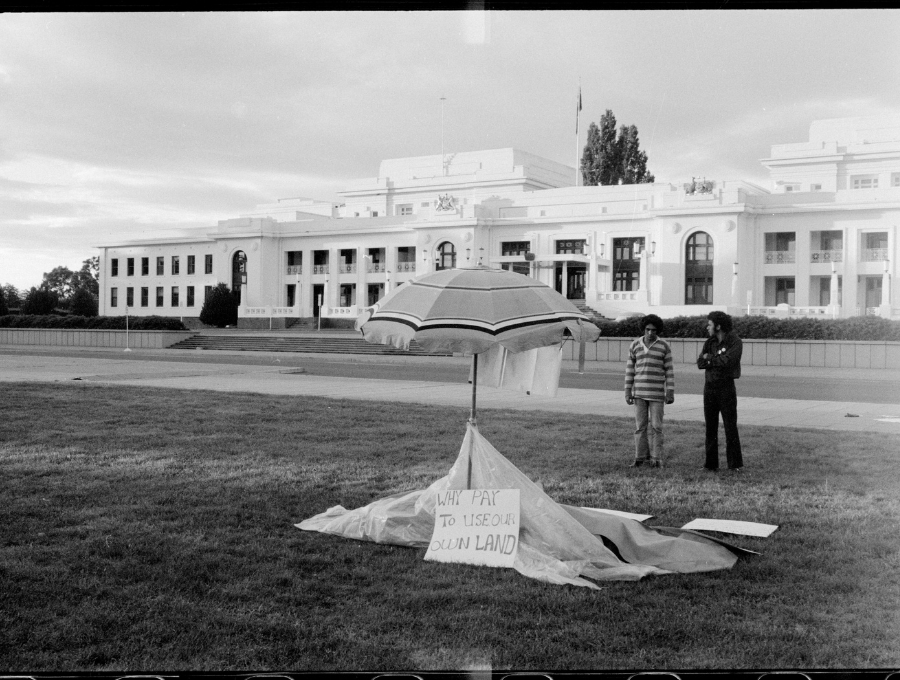
Billy Craigie and Michael Anderson setting up the Aboriginal Tent Embassy in front of Old Parliament House, on Ngunnawal Country (Canberra), on 27 January, 1972. Their sign reads, ‘Why pay to use our own land?’ Photo: State Library of New South Wales collection, sourced from Alamy
By Bronwyn Carlson and Lynda-June Coe
Aboriginal and Torres Strait Islander readers are advised this article contains names and images of deceased people.
Often people think about the Aboriginal Tent Embassy as something historic, dating back to the 1970s. But it should also be thought of as a site of the longest protest for Indigenous land rights, sovereignty and self-determination in the world.
In fact, this year, the Tent Embassy is set to celebrate its 50th continuous year of occupation. Demonstrating its significance to Australian history, it was included on the Commonwealth Heritage List in 2015 as part of the Old Parliament House precinct.
In this momentous year, it’s worth remembering how the Tent Embassy came to be and what it has continued to stand for since its erection in 1972 – and the significance it still has today.
Aliens in our own land
The Tent Embassy began its public life on 26 January, 1972. On that day, Michael Anderson, Billy Craigie, Bertie Williams and Tony Coorey left Redfern and drove to Ngunnawal Country (Canberra), where they planted a beach umbrella opposite Parliament House (now known as Old Parliament House). They erected a sign that said “Aboriginal Embassy”. With them on that day was their driver, Tribune photographer Noel Hazard, who captured the event in a series of photos.
The term “embassy” was used to bring attention to the fact Aboriginal people had never ceded sovereignty nor engaged in any treaty process with the Crown. As a collective, Aboriginal people were the only cultural group not represented with an embassy.
According to Aboriginal activist and scholar Gary Foley, the absence of an Aboriginal embassy in Canberra was a blatant indication Aboriginal people were treated like aliens in their own land.
Initially, the protesters were making a stand about land rights following the then prime minister William McMahon’s speech that dismissed any hope for Aboriginal land rights and reasserted the government’s position on the policy of assimilation. The Tent Embassy was therefore a public display of our disapproval of and objection to the policies and practices of the government.
In later years, it has become an acclaimed site of our continued resistance to the continuity of colonial rule.
The above is an excerpt from Reconciliation News – May 2022.
Read the full article online in the latest edition of Reconciliation News.
This edition of Reconciliation News is all about the importance of Aboriginal and Torres Strait Islander peoples’ cultural empowerment, protection and rights. Download the full PDF or read the full edition online.



